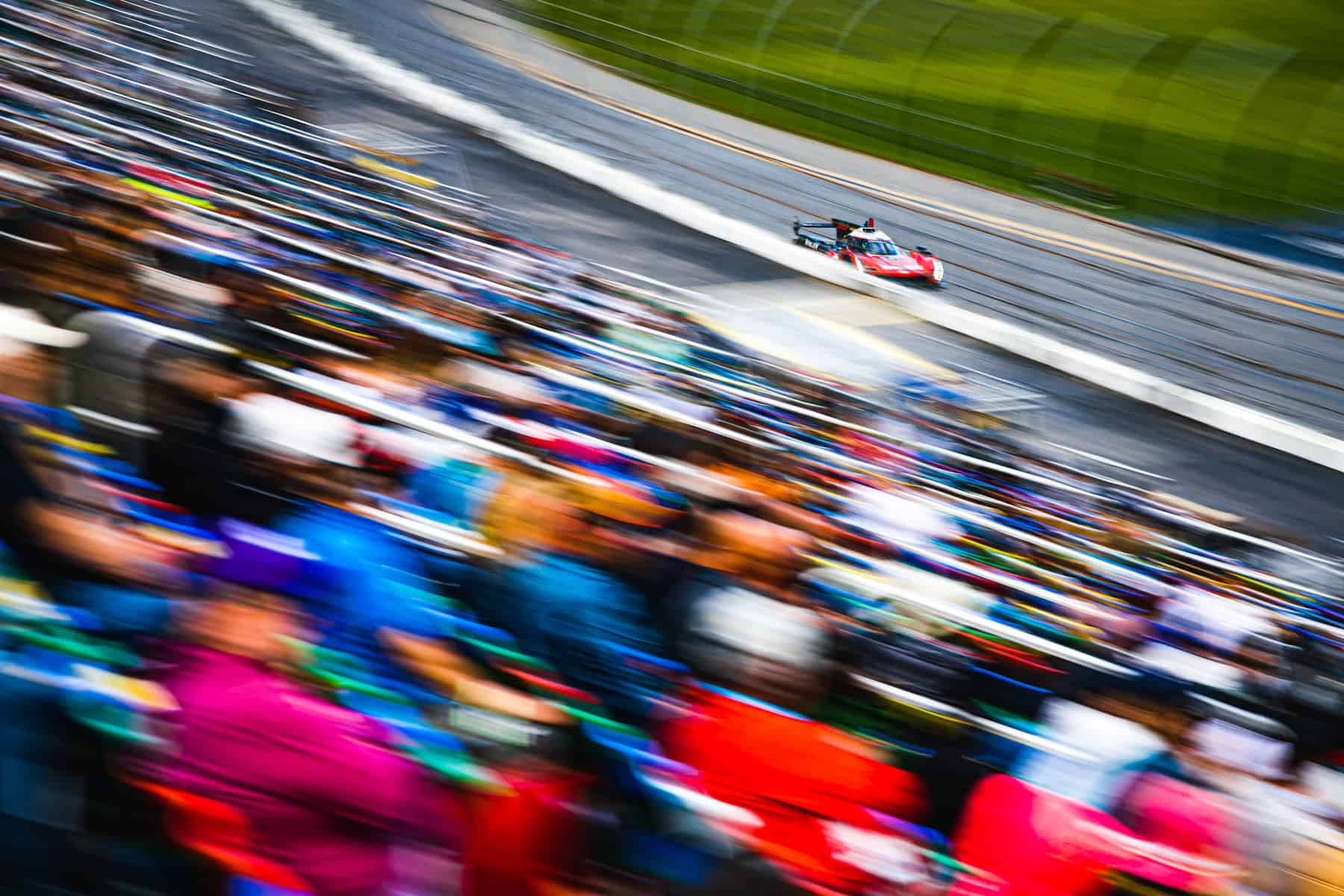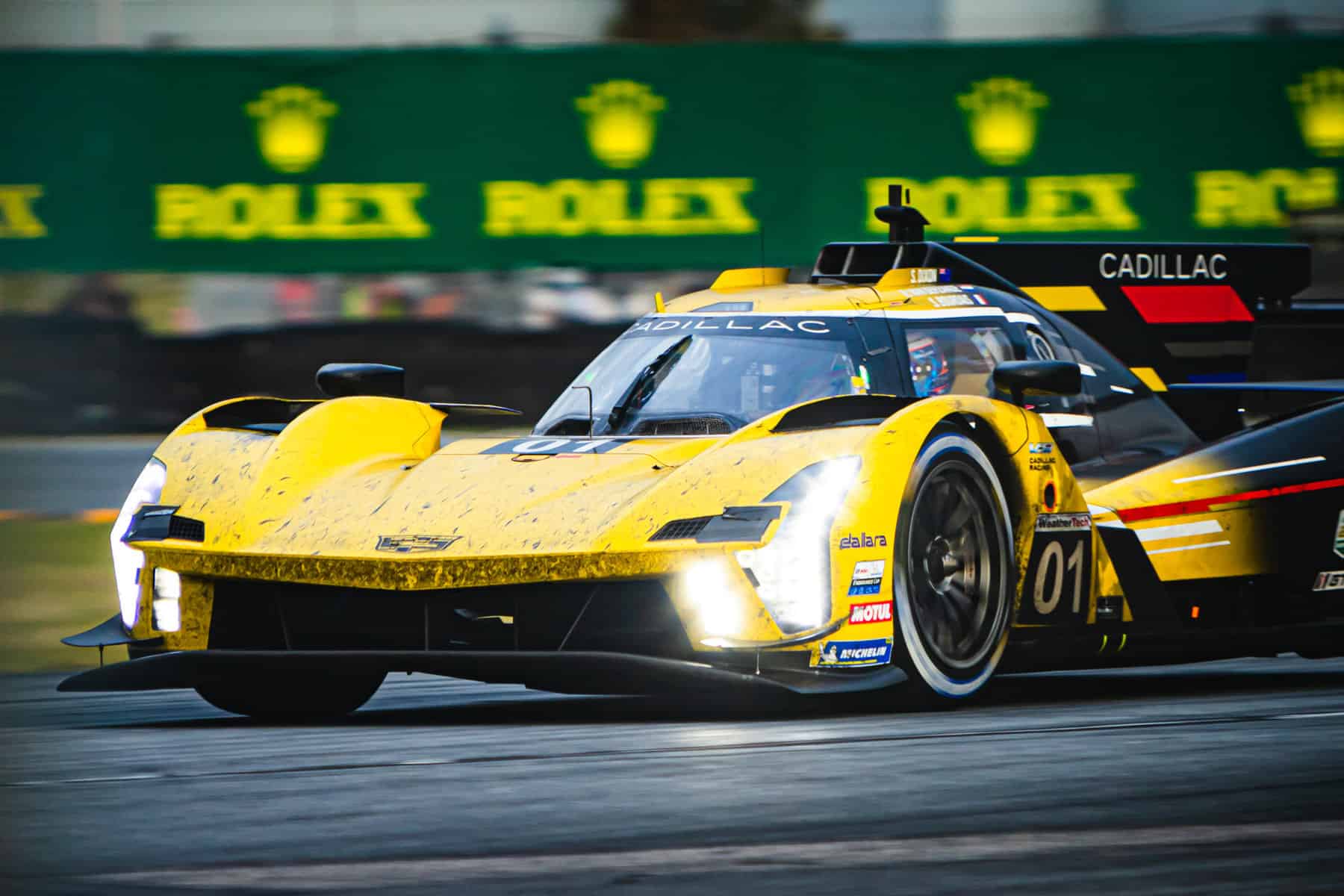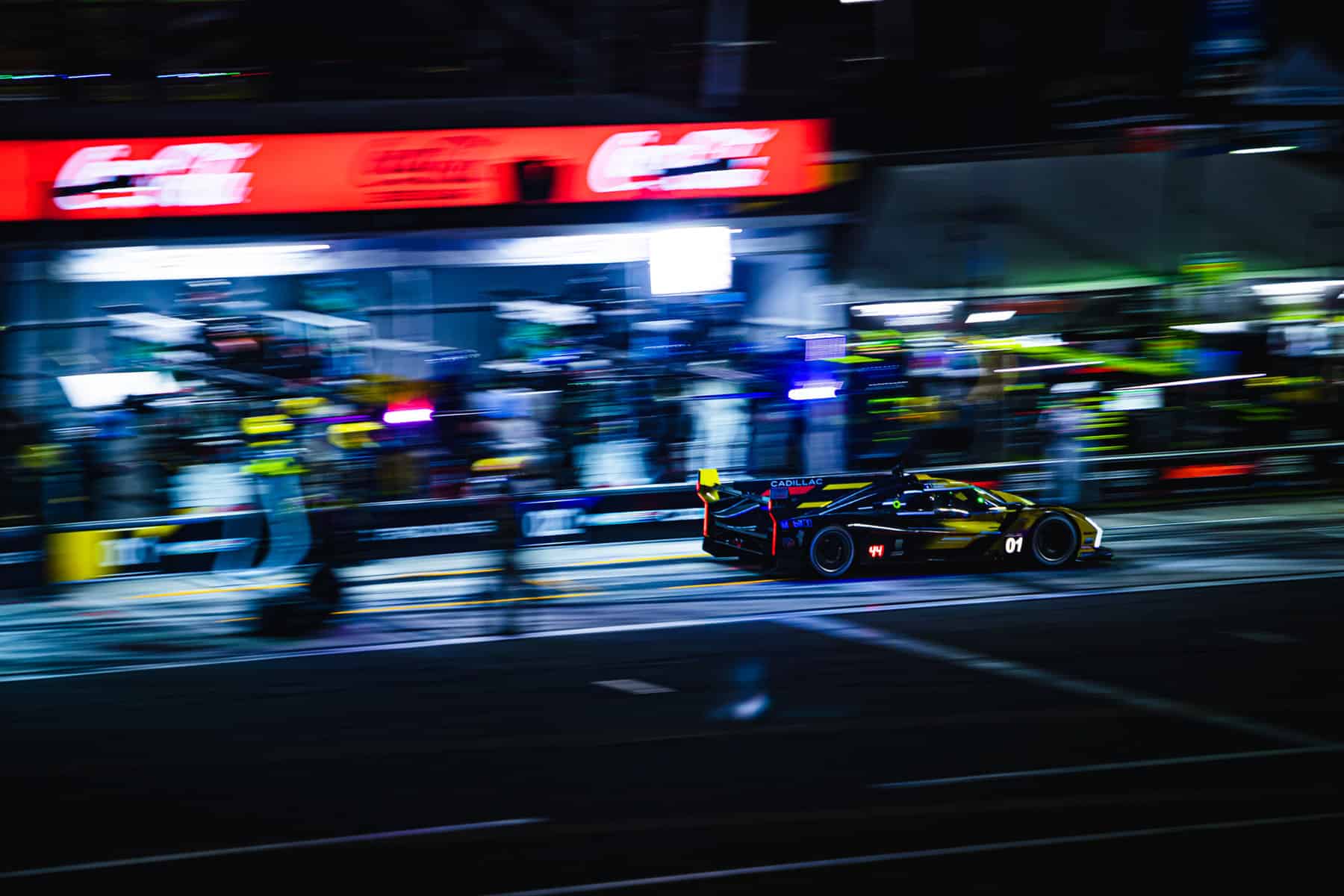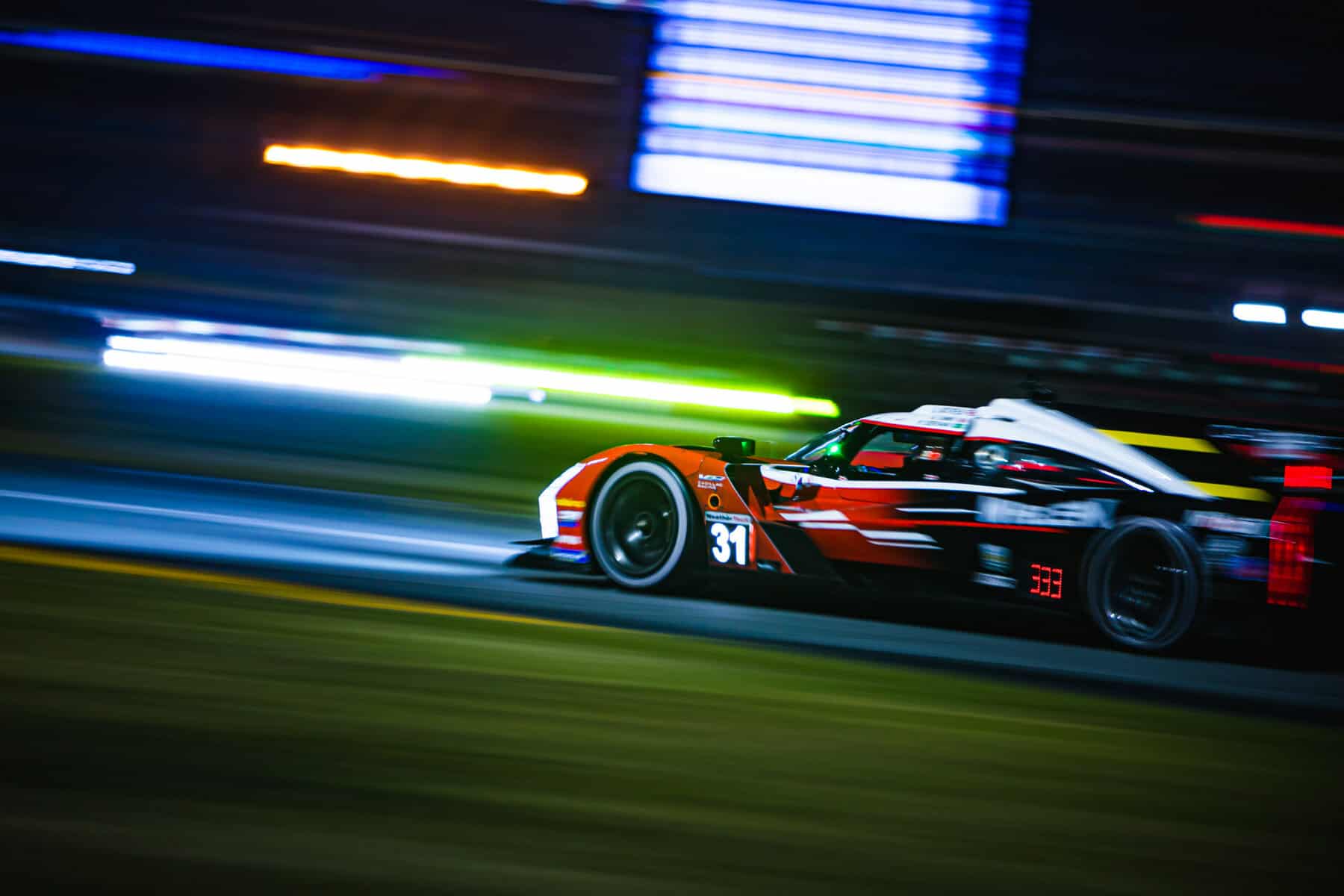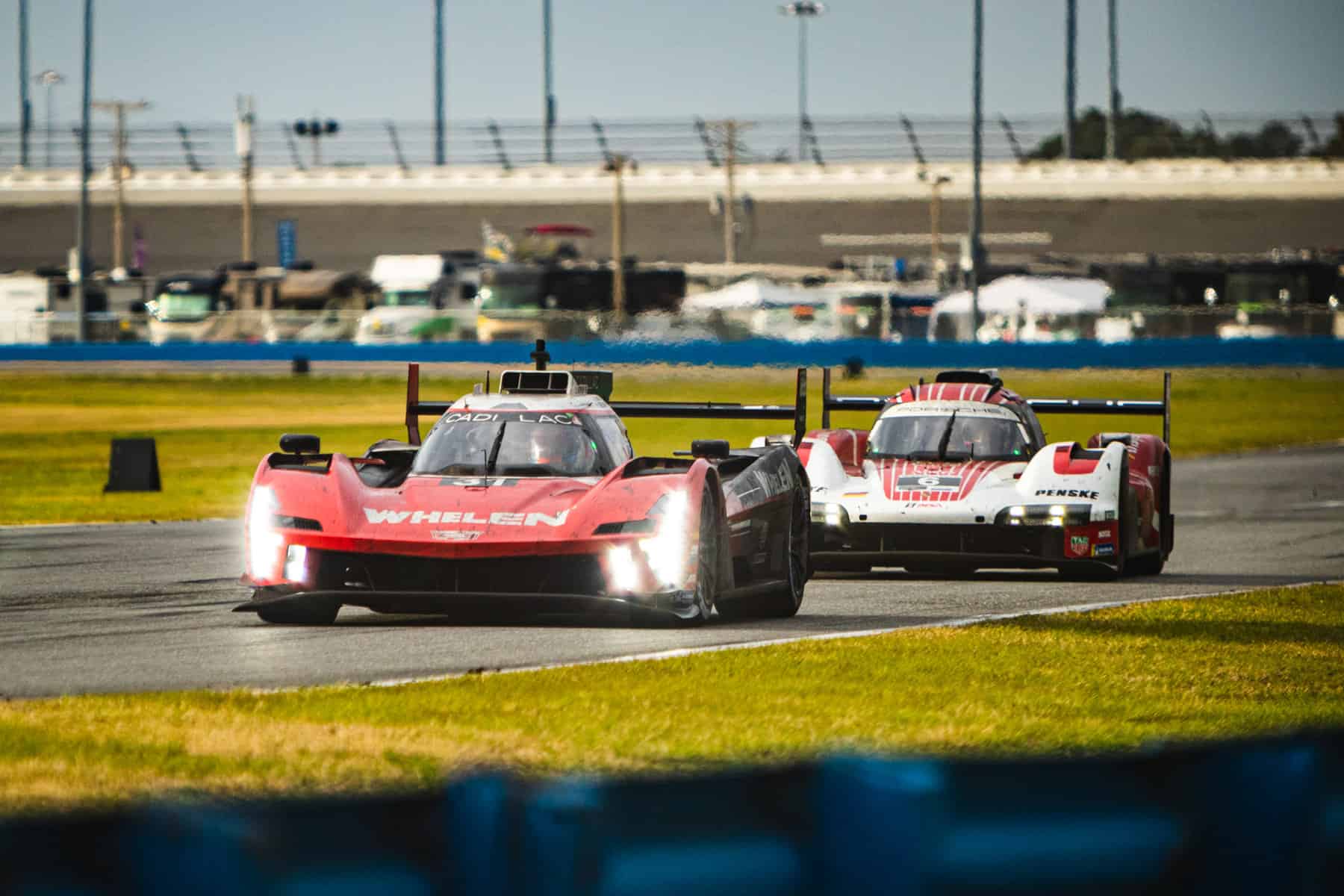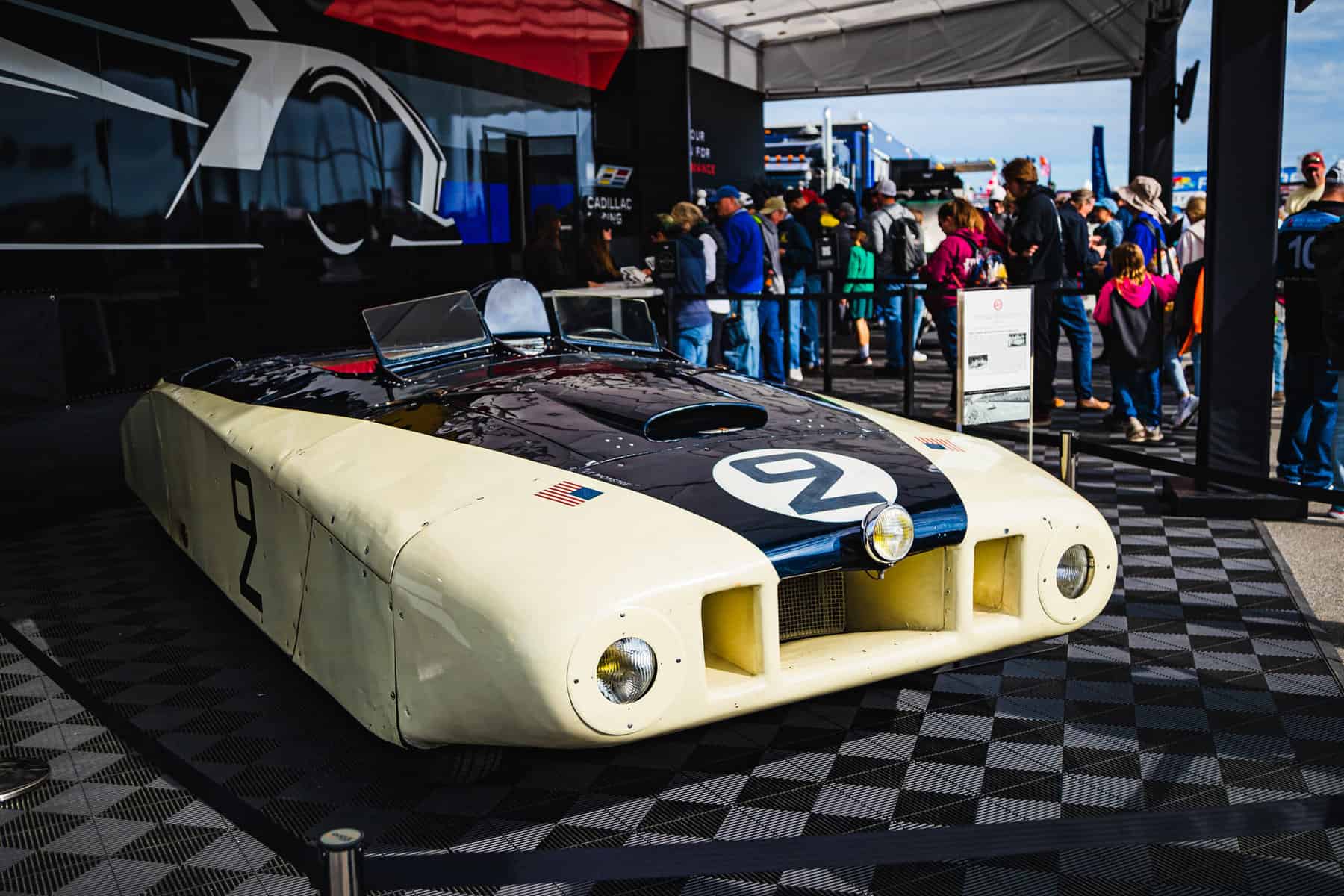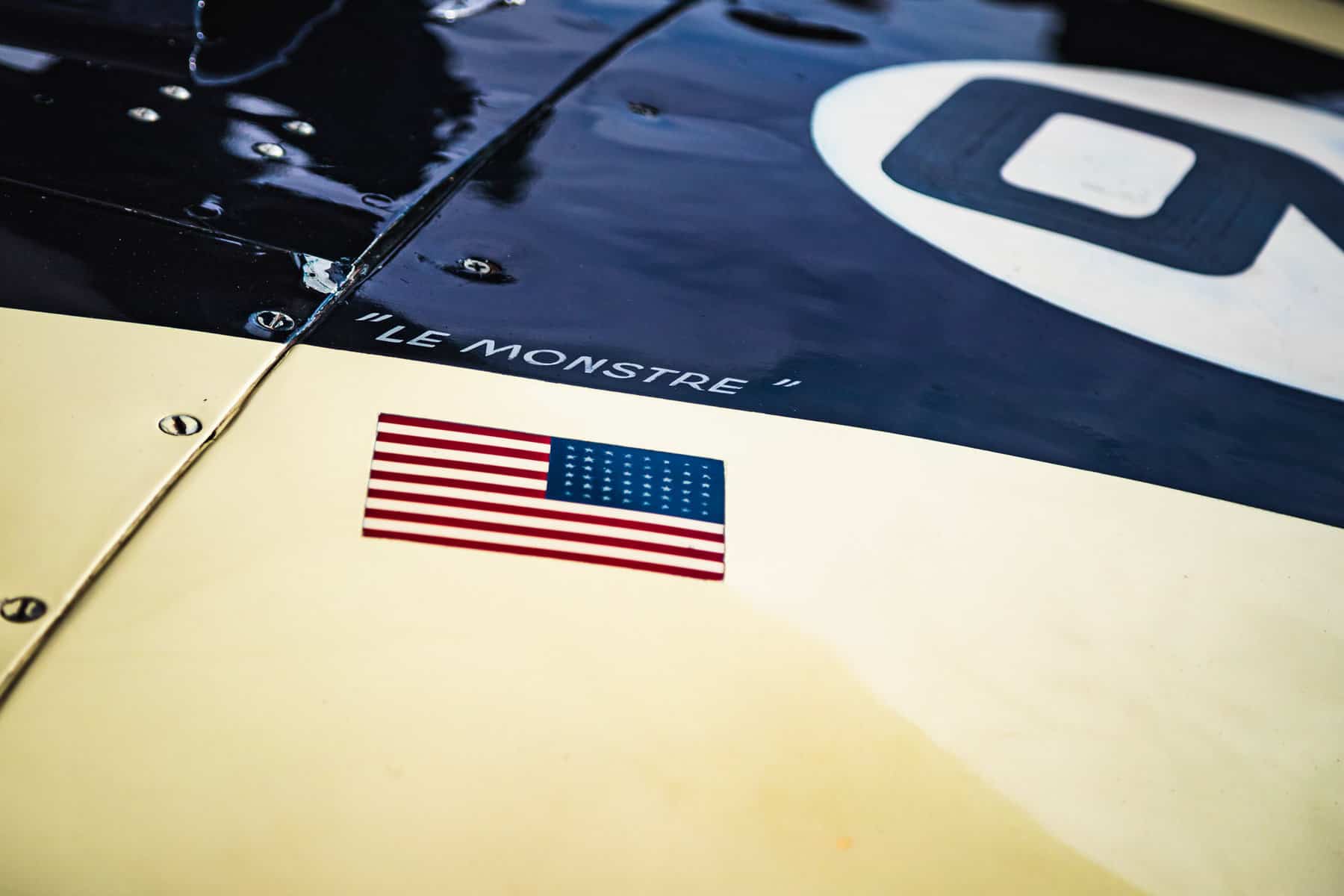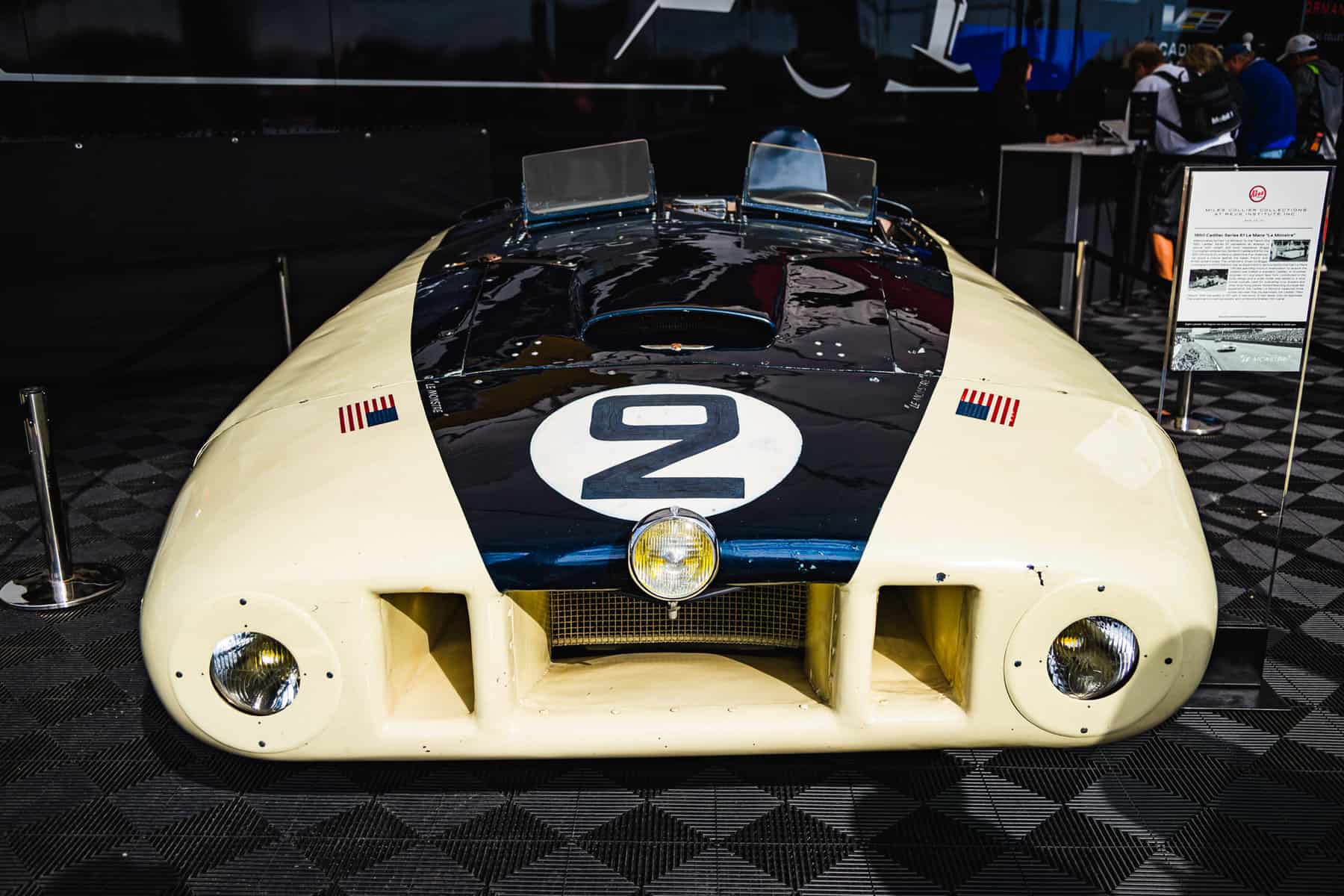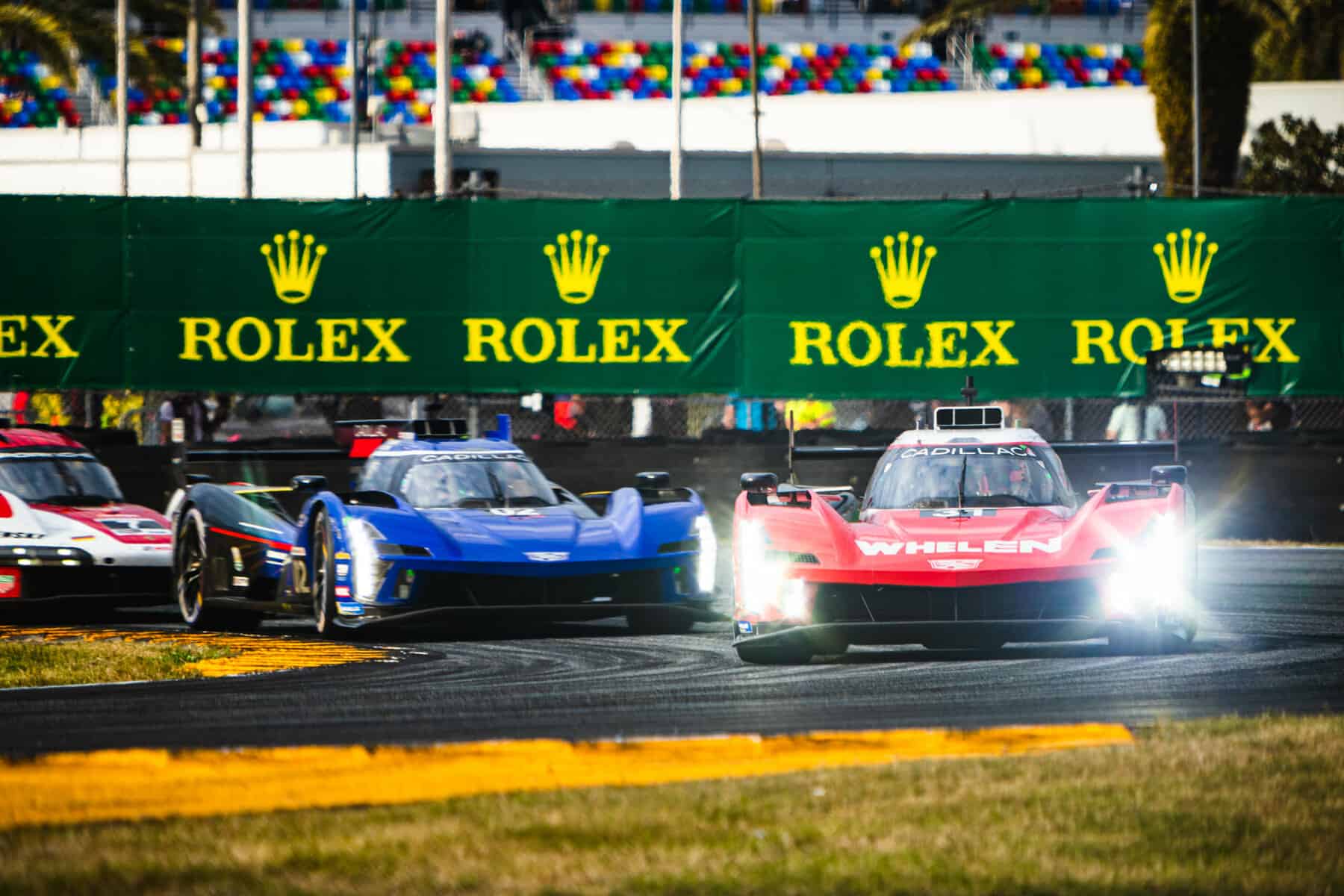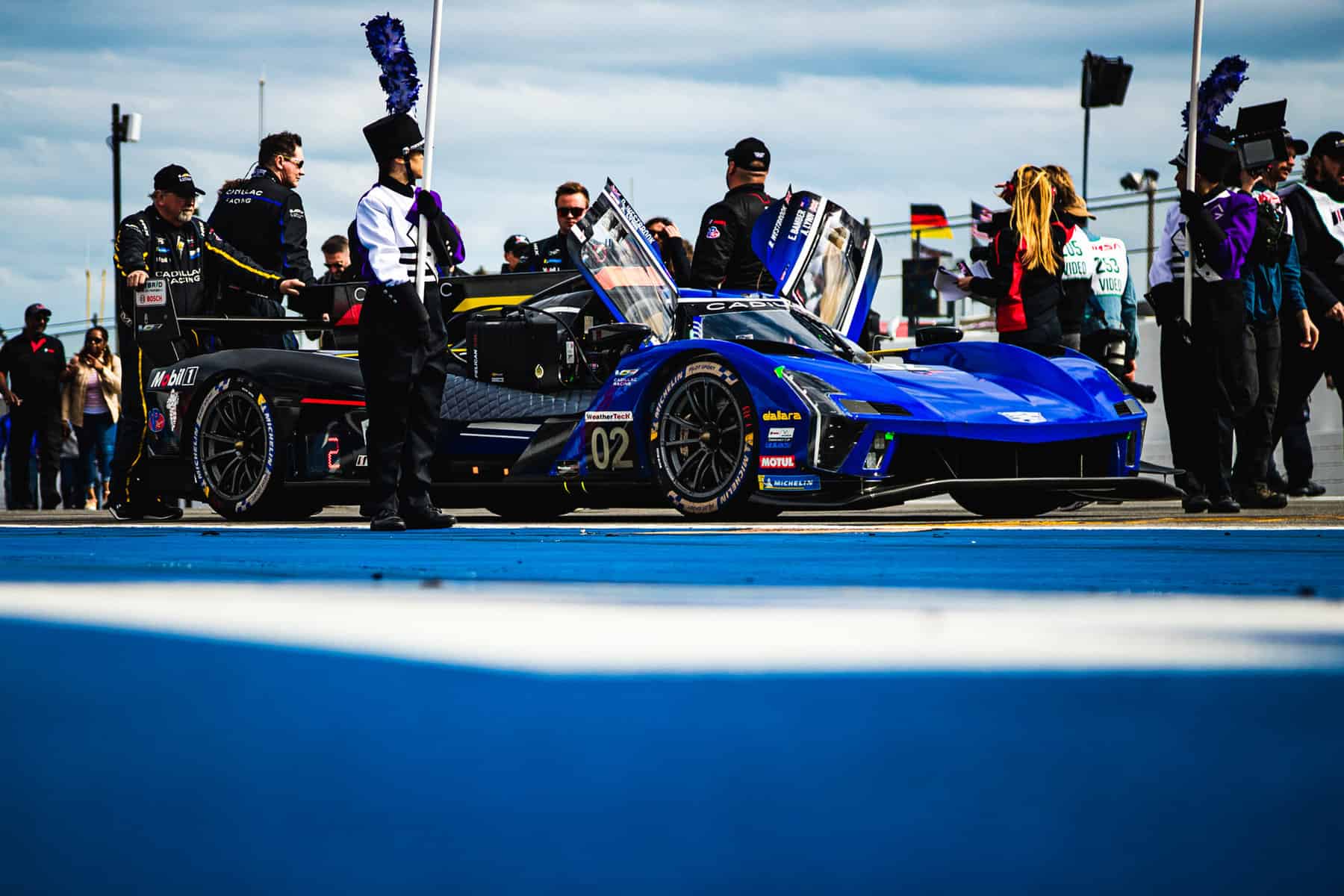
One Step Closer to Le Mans
Cadillac’s GTP/LMDh Challenger
WORDS & IMAGES BY: DAVID SANTIAGO
As the dust settles at Daytona International Speedway following the sixty-first running of the twenty-four-hour endurance race, a new era in sports-car racing dawns, an era of collaboration and manufacturer involvement that will see the likes of Cadillac, Ferrari, Porsche, Peugeot, Glickenhaus, Vanwall, and Toyota all compete for the Centenary trophy at Le Mans.
In particular, amid this gamut of well-known manufacturers is GM’s luxury arm, Cadillac. IMSA’s season opener was the Cadillac V-LMDh’s debut and brings the Detroit giant one step closer to motorsport’s crown jewel: an overall win at Circuit de la Sarthe.
A win could make Cadillac the first American manufacturer to claim top honors since Ford’s famous wins with their GT40s nearly sixty years ago. If the results from Daytona are any indicator for the rest of the year, the future for Cadillac’s IMSA and WEC season are promising, but full of stiff competition. Despite not qualifying on the pole, all three Cadillacs entered were competitive on race day and fought for the lead throughout the twenty-four-hour race. Ultimately, all three cars finished in third, fourth, and fifth, with two of the three on the lead lap, bested only by the pair of Acura ARX-06s, which were a mere ten seconds up the road from the first Cadillac.
These results are particularly impressive considering this is the first outing for the new unproven hybrid powertrains, which define the new IMSA GTP category. At this point you might be wondering how they can compete at Le Mans if these cars are built to IMSA spec? Lucky for motorsport fans, IMSA and the FIA/ACO (governing bodies of the WEC and Le Mans) have worked together to modify the regulations and class structure such that the GTP cars and Hypercars (WEC equivalent category to GTP) can race in both series, including Le Mans.
Technically, when GTP Cars race in the WEC it will be in the LMDh category (Le Mans Daytona hybrid), which is differentiated from the bespoke Hypercars built from the ground up by Toyota and Glickenhaus, for example. However, the bottom line for motorsport fans is that for the first time in decades, top-tier prototypes from both sides of the pond will battle against each other for overall victory.
The V-LMDh is essentially a spec chassis and hybrid system, in this case built by Dallara, that Cadillac uses as a base to design the body and aerodynamic components. It’s powered by a 5.5-liter Cadillac V-8 engine, which has a maximum power output of 670 horsepower when augmented by the hybrid system. This mix of spec and bespoke components has proven to be cost effective for teams and manufacturers, which has attracted automotive giants like Porsche, BMW, and, in the near future, Lamborghini.
Cadillac fielded three V-LMDhs for Daytona, but only the No. 01 and No. 31 car will compete in the rest of the IMSA Season. The No. 2 car will be dedicated to the WEC races, including Le Mans. The next stop on the calendar for both series is Sebring International Raceway for the Super Sebring weekend featuring the WEC 1,000 Miles of Sebring and the IMSA 12 Hours of Sebring. Here the Cadillac will get its first chance to compete against the WEC Hypercars and see how they stack up.
After Sebring there are a handful of races until Le Mans. This year marks the one-hundredth running of the endurance race, making it one of the oldest races still running today alongside other major events like the Indy 500. Throughout its history many manufacturers have sought the prestige of victory at the French classic, including Cadillac. With this edition being the centenary, the level of prestige is elevated even more.
Rewind time more than seventy years ago in the 1950s: America wasn’t really known for making nimble sports cars. The cars we produced were suited to big open roads, which led to big heavy cars. However, there were some privateers willing to prove that an American-made car could go the distance at Le Mans – most notably Briggs Cunningham. In 1950, he entered two Cadillacs for the race, one a lightly modified Series 61 Coupe and the other a heavily modified version of the same car.
Le Mans rules only allowed certain modifications to be made and one of them was alterations to the bodywork. Briggs enlisted the help of a Grumman engineer to streamline the big Cadillac, and the result was a creation that the French would later dub “Le Monstre” for its unique appearance. Unsightly as it was, the streamlining efforts increased the top speed to 130 mph, which was 13 mph faster than the standard car.
Ultimately, the advantages of Le Monstre proved null during the race, when Briggs found himself stuck on one of the sandbanks and had to dig the car out by hand (having elected not to store a shovel in the car for such an eventuality). Later, he would lose all but top gear, further hindering the car’s performance, but he managed to nurse the car to the end of the race in eleventh overall just behind the sister car in tenth place.
Briggs would go on to build his own sports cars in the future and continue to pursue an American victory at Le Mans – something he would sadly never accomplish despite his best efforts and adoration of the fans. It wasn’t until Ford showed up with their GT40s determined to beat Ferrari at their own game that an American car won Le Mans overall. Since then, others have tried, including Cadillac again with their Northstar LMP program in the early 2000s, but none have been successful.
With Cadillac joining the fray at Le Mans, after years of race wins and championship titles in IMSA, this could be America’s best shot at flying the stars and stripes across the finish line. At the very least they join Glickenhaus, another American manufacturer who are WEC and Le Mans veterans, in increasing the odds of such an outcome.
Even so, endurance racing is unpredictable. Look no further than Toyota’s heartbreaking last-lap glitch from 2016 that cost them the win. That’s what makes endurance racing exciting and why this centennial running of the race will be made all the more exciting with Cadillac’s historic return.
